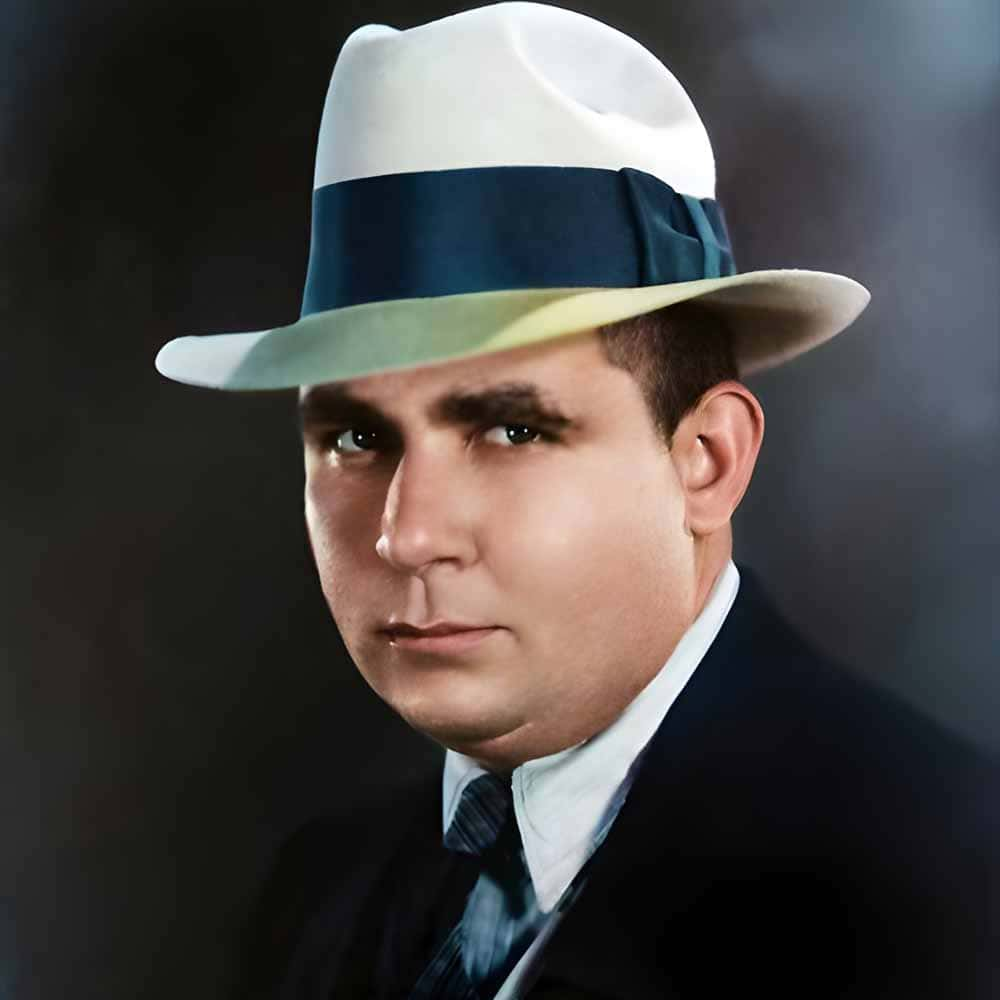
Robert E. Howard: The Enduring Legacy of a Pulp Fiction Icon
Robert E. Howard was an American author of pulp fiction who is renowned for his significant contributions to the sword and sorcery genre. Born on January 22, 1906, in Peaster, Texas, Howard spent most of his life in the state, and it is here that he penned his most famous creation, Conan the Barbarian. Conan, a character whose adventures defined the sword and sorcery genre, first appeared in a series of short stories for Weird Tales magazine in the early 1930s. Howard’s work has had a lasting influence on the field of fantasy literature.
Beyond Conan, Howard’s other characters, such as Solomon Kane, King Kull, and Bran Mak Morn, also have a prominent place in fantasy fiction. His writing is characterized by its vivid imagery, swift pacing, and a flair for blending action with a dark, brooding atmosphere. Despite his relatively short career, ending with his untimely death at the age of thirty, Howard was a prolific writer who managed to publish a vast array of stories across various genres, including fantasy, horror, and westerns.
Howard’s legacy endures through his characters and stories, which continue to be read and appreciated by new generations of fans. They have been adapted into various media, including movies, television shows, comic books, and role-playing games. His influence is widely recognized within the world of fantasy literature, and his works have been a significant source of inspiration for writers who have followed in his footsteps.
1. Early Life and Influences
Robert E. Howard’s formative years were deeply rooted in the landscapes and culture of Texas, which influenced his vivid storytelling. His literary taste was shaped by the adventure tales and robust narratives of early 20th-century authors.
1.1. Texan Roots
Born on January 22, 1906, in Peaster, Texas, Howard was enveloped by the ruggedness of the Lone Star State throughout his youth. Texas, a land with a rich history of frontier tales and conflicts, left an indelible mark on his psyche. As he grew, he was influenced by the customs and stories of the region, which would later permeate his works.
1.2. Literary Inspirations
Howard’s educational journey included a successful tenure at Brownwood High School, where he exhibited a burgeoning talent for writing. The literary seeds were sown early, and Howard found profound inspiration in the works of H.P. Lovecraft, Rudyard Kipling, and Jack London—each lending a sense of adventure and the unknown to Howard’s imagination. The stories of Tarzan of the Apes, filled with untamed jungles and wild exploits, significantly impacted his later creation of visceral and exotic worlds in his writing. Howard corresponded with Lovecraft, introducing a rich exchange of ideas that helped refine his craft. His affinity for the robust and adventurous spirit, along with a touch of the strange and otherworldly, became the bedrock of his storytelling ethos.
2. Writing Career
Robert E. Howard’s writing career is marked by his prolific contributions to pulp fiction, the creation of iconic characters, and his varied literary works including poetry. His influence on genre fiction remains significant.
2.1. Pulp Fiction Era
Throughout the 1920s and 1930s, Howard found success within the pages of pulp magazines. His work frequently appeared in Weird Tales, often regarded as the preeminent pulp magazine for speculative and horror fiction. Howard also contributed to other publications such as Argosy, adding to his repertoire of historical, horror, and adventure stories.
- Weird Tales: Regular contributor
- Argosy: Featured writer
- Genres: Historical, Horror, Adventure
2.2. Creation of Iconic Characters
Howard introduced several enduring characters to the canon of fantasy literature. His most famous creation, Conan the Barbarian, debuted in Weird Tales and went on to become the archetype of the sword-and-sorcery hero.
- Conan the Barbarian: Sword-and-sorcery icon
- Kull: Atlantean monarch, predating Conan
- Solomon Kane: A vengeful Puritan adventurer
These characters starred in a variety of short stories and established Howard as a key figure in their respective genres.
2.3. Poetry and Other Works
Aside from his staple fiction, Howard had a passion for poetry. His poems reflected themes of history, heroism, and existential contemplation. Beyond his contributions to fantasy and adventure, Howard wrote boxing stories, westerns, and even dabbled in creating sports fiction, demonstrating his versatility across genres.
- Poetry: Historical and heroic themes
- Boxing Stories: Tales of pugilistic prowess
- Westerns: Capturing the spirit of the American frontier
His work extended the scope of pulp literature and left a lasting imprint on American storytelling.
3. Major Literary Works
Robert E. Howard created a significant impact on the world of fantasy literature through a prolific output of stories. His creations, most notably the Conan the Barbarian series, along with other remarkable characters, have left an indelible mark on the genre.
3.1. The Conan Series
The Conan series stands as Howard’s most influential and enduring work. Set in the fictional “Hyborian Age,” after the destruction of Atlantis but before the rise of known ancient civilizations, the series follows the adventures of Conan, a barbarian warrior who later becomes a king.
- The Phoenix on the Sword: The first published Conan story, which introduces Conan as the king of Aquilonia facing internal conspiracies and supernatural threats.
- The Hour of the Dragon (also known as Conan the Conqueror): This is the only full-length novel in the series, featuring a more mature Conan fighting to reclaim his lost throne.
- Red Nails: One of the last Conan stories written by Howard, known for its dark tone and reflection on civilization’s darker aspects.
- Queen of the Black Coast: A tale of Conan’s love affair with the pirate queen Bêlit and their adventures on the high seas.
3.2. Other Notable Characters
Apart from Conan, Howard created several other characters that operate in their distinct universes or historical periods.
- Bran Mak Morn: A chieftain of the Picts, Bran Mak Morn is featured in stories set against the declining Roman Empire, highlighting Howard’s grasp of history and his ability to weave it into his narratives.
- Solomon Kane: A somber, 16th-century Puritan adventurer, Solomon Kane’s stories combine swashbuckling adventures with supernatural horror.
- El Borak: Known also as Francis Xavier Gordon, El Borak is an adventurer and gunslinger with tales set in the Middle East. He is a skilled fighter and strategist, often embroiled in tribal conflicts and espionage.
4. Robert E. Howard Legacy and Significance
Robert E. Howard’s impact on literature, particularly within the fantasy genre, is underscored by the continued interest in his works after his death and his lasting influence on later writers and the development of the sword and sorcery subgenre.
4.1. Posthumous Publications
Following Robert E. Howard’s passing in 1936, his work saw a significant revival due to the efforts of various individuals and publishers. Glenn Lord, a literary agent and an aficionado of Howard’s work, took an instrumental role in the revival through The Howard Collector. This publication provided a platform for Howard’s unpublished and lesser-known writings from 1961 to 1973. Arkham House, a key player in preserving and promoting the works of pulp fiction authors, also played a crucial role by publishing Howard’s collection of stories, ensuring they remained accessible to the public.
Similarly, L. Sprague de Camp and Lin Carter not only edited and published Howard’s stories through Gnome Press but also expanded on his Hyborian universe, creating additional content and story arcs. They were pivotal in introducing Howard to a broader audience during the 1960s and 1970s when sword and sorcery was gaining popularity among fantasy enthusiasts.
4.2. Influence on Fantasy Genre
Howard’s creation, the genre now known as sword and sorcery, is characterized by intense action, otherworldly settings, and larger-than-life heroes. His protagonistic archetype, exemplified in characters like Conan the Barbarian, became a staple of fantasy literature. Howard’s influence on the genre is evident when compared to contemporaries such as J.R.R. Tolkien, whose works began shaping the modern high fantasy tradition. While Tolkien’s stories gravitated towards an expansive, epic scale, Howard focused more intently on the gritty, personal struggle of his characters against both arcane and corporeal perils.
The works of later fantasy writers consistently echo Howard’s contributions; his style and themes often surface in their narratives, showcasing his enduring legacy. His presence in the pantheon of fantasy literature remains strong as readers and writers continue to draw inspiration from his vision, thereby cementing his significance within the genre.
5. Adaptations and Popular Culture
The legacy of Robert E. Howard has been significantly carried forward through various adaptations in film, television, and continued literary works. His most renowned creation, Conan the Cimmerian, has seen a rich expansion into popular culture, solidifying Howard’s stature in the fantasy genre.
5.1. Film and Television
- Conan the Barbarian (1982): This film was a watershed moment for bringing Howard’s work to a wide audience. It starred Arnold Schwarzenegger as Conan and was directed by John Milius. Although titled Conan the Barbarian instead of Conan the Conqueror, it took inspiration from Howard’s stories and helped ignite the sword and sorcery boom in the 1980s.
- Television Series: There have been various television adaptations. These include animated series such as Conan the Adventurer and live-action series like Conan the Barbarian, all introducing the character to new generations.
5.2. Literary Continuations
- L. Sprague de Camp: An influential figure in the continuation of Howard’s work, de Camp edited, rewrote, and adapted Howard’s unfinished works, creating new Conan stories and crafting a more codified timeline for the series.
Publication Lists:
- Conan the Cimmerian Series: L. Sprague de Camp, along with other authors like Lin Carter, expanded the series with new adventures.
Table 1: Notable Continuations and Compilations by L. Sprague de Camp
| Title | Type | Contribution |
|---|---|---|
| Conan the Adventurer | Compilation | Editing and additional content |
| Conan the Buccaneer | Novel | Co-authored with Lin Carter |
| Conan the Liberator | Novel | Co-authored with Lin Carter |
| Conan and the Spider God | Novel | Solo work by de Camp, set in the Conan world |
Cross Plains: This is the birthplace of Robert E. Howard and home to the Robert E. Howard Museum. It’s been recognized on the National Register of Historic Places, demonstrating the lasting importance of Howard’s contributions to fantasy literature and its preservation within American culture.
6. The Howard Estate and Archives
The Howard Estate oversees the preservation and propagation of Robert E. Howard’s literary legacy. It is a crucial resource for scholars and fans seeking to understand the breadth of Howard’s work and his life.
6.1. Archival Collections
Glenn Lord was a pivotal figure in the preservation of Howard’s manuscripts and served as the literary executor until his death in 2011. His efforts significantly enriched the archival collections available today.
Project Gutenberg has played a role in ensuring that Howard’s public domain works, such as “The Black Stranger,” are accessible to the public. This digital library aids in the dissemination of Howard’s stories, allowing for a broader audience to appreciate his writing.
The holdings related to Howard’s work have, at various times, included rare publications and editions from Gnome Press, which was instrumental in the initial hardcover publication of Howard’s works in the 1950s. Collectors and scholars often seek out these editions for their historic and literary value.
6.2. Biographical Research
The town of Cross Plains, Texas, is intrinsic to Howard’s life story and the ongoing biographical research into his personal and professional world. The community embraces its connection to Howard, with the Robert E. Howard Museum at his former home serving as a focal point for fans and researchers.
Biographical research materials in the archives often reference the tangible influences of Cross Plains on Howard’s work. Attention is given to correlating real-world elements with the imaginative settings and characters found in his writings.
7. Cultural and Geographic Influence
Robert E. Howard’s work reflects a rich tapestry of cultural and geographical influences. His fictional creations, particularly the Hyborian Age, draw from a myriad of real-world regions and their folklore, weaving these elements into his fantasy worlds.
7.1. Hyborian Age and Cimmeria
The Hyborian Age, conceptualized by Howard as a mythic prehistoric era, is the setting for his Conan the Barbarian stories. Howard’s creation of this era was influenced by his reading of history and mythology; it is a melting pot of cultures, including elements reminiscent of the Vikings, Picts, and Arabs. The setting is diverse, consisting of fictional places interwoven with hints of real geographic and historical cultures.
- Cimmeria, the homeland of Conan, is particularly notable. It is described as a harsh, rugged land with fierce warriors, drawing parallels with the Scandinavian lands of the Vikings. Howard portrays Cimmeria with a distinct sense of place—cold, forbidding, and steeped in the valor of its people, much like the historical Vikings known for their sailing and raiding prowess.
- The Hyborian Age itself is a tapestry of fictitious battles and alliances, reflective of the real-world struggles between ancient nations. Howard’s stories feature conflict as a central theme, embodying the chaos and power struggles that have shaped human history.
7.2. Influence of Regional Folklore
Howard was deeply influenced by the folklore of his own region, as well as the broader traditions of Western and non-Western cultures.
- The Picts, a confederation of tribes in Iron Age Scotland, play a significant role in Howard’s work. They are often depicted as a wild and mysterious people, shaped by Howard’s interpretation of their historical legacy combined with the lore from his native Texas.
- The Vikings and Arabs also find their way into Howard’s narratives, with their historical reputations for exploration, warfare, and poetry leaving an indelible mark on the fabric of his fictional worlds. Their distinct cultures are represented through the behaviors, battle strategies, and customs of various Hyborian Age communities, illustrating Howard’s knack for cultural amalgamation.
Howard’s literature does not merely draw from these influences—it also contributes to them, adding to the mythos of the cultures it portrays and expanding the range of their folkloric reach.
8. Conclusion
Robert E. Howard’s impact on the literary genre of swords and sorcery cannot be overstated. His creation of Conan the Barbarian marked a significant contribution to fantasy literature, influencing countless writers and artists. His works have been adapted into various media, including films, television shows, and comic books, which have served to continuously amplify his legacy.
The body of Howard’s work, though produced in a relatively brief lifetime, has achieved remarkable longevity. Howard himself has become a seminal figure in the pulp fiction arena, with scholars and enthusiasts studying his storytelling techniques and thematic elements. His writing style, characterized by vibrant imagery and swift pacing, keeps his narratives fresh and engaging to this day.
Howard’s Legacy is multifaceted. His influence extends beyond the printed page and into the broader pop culture, where the archetype of the brooding hero he so adeptly crafted continues to resonate. Howard’s emphasis on visceral action and epic adventure taps into a universal appeal, securing his place in the pantheon of foundational genre writers.
The continued interest in and appreciation for Howard’s oeuvre ensure that his creations will endure, inspiring future generations to explore the rich landscapes he envisioned. Through a combination of pioneering creativity and a deep understanding of humanity’s love for mythos and heroism, Robert E. Howard remains a titan in the realm of speculative fiction.




